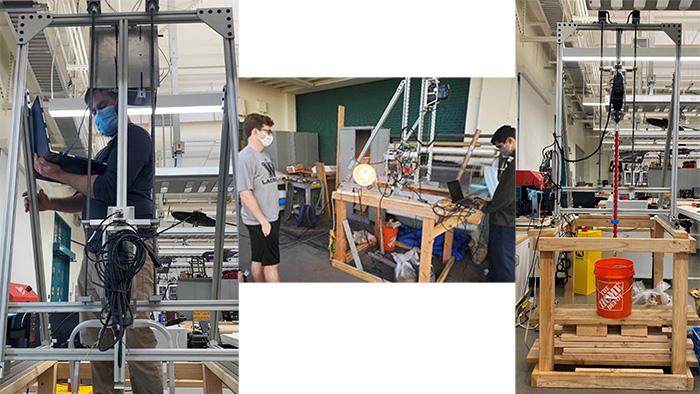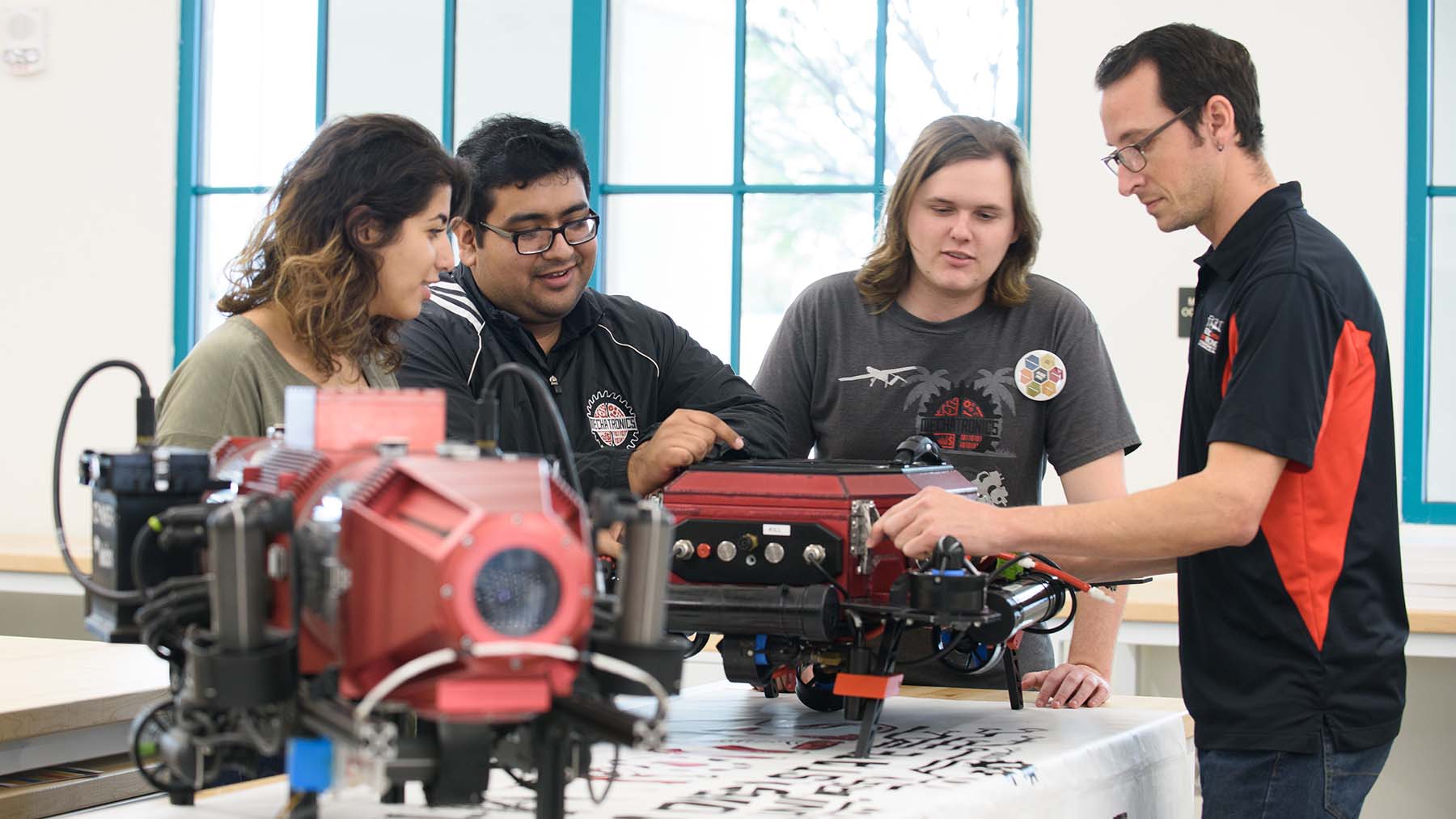Senior Design Project Team Selected as Finalist in NASA Moon to Mars Prospecting Challenge

After a rigorous selection process, NASA and the National Institute of Aerospace announced that San Diego State University was among nine teams from universities across the nation named as finalists for the 2021 Revolutionary Aerospace Systems Concepts — Academic Linkage (RASC-AL) Special Edition: Moon to Mars Ice & Prospecting Challenge. The interdisciplinary Team consists of Matthew Gonzalez (ME), David Bunson (ME), Krysta Rhodes (ME), Jesus Figueroa (ME), Jonathan Maravilla (ECE), Alan Clemenson (ECE), Brandon Mosburg (ECE), Ryan Marmion (ECE), and Humood Alghunaim (ECE), with Dr. Scott Shaffar, the Senior Design Project Instructor, as their Advisor.
The finalists will design and build hardware that could identify, map and drill through various subsurface layers, then extract water from a 600-pound ice block in a simulated off-world test bed. Their systems will then be demonstrated for a panel of judges that will include NASA engineers, researchers and industry experts. NASA has confirmed water on the sunlit surface of the moon and ice at the poles, in addition to extensive subsurface ice deposits on Mars, and as a result, have planned missions under the Artemis Program to investigate the abundance and locations of this water in more detail. Harvesting that water, however, is another feat, and this challenge for university students aims to advance the technology needed to make it possible.
The team’s entry is named ARES, the Aztec in-situ Resource Extraction System, and is SDSU’s first time participating in the competition. The novel of ARES stems from its use of radiant heating, an auger-style drill, and an extraction system that utilizes a peristaltic pump to bring the melted ice to the surface. During the competition, Team ARES and other finalists will harvest as much water as possible from simulated slices of lunar and Martian surfaces. Additionally, they will take part in a poster session, elaborating on the differences between operating their hardware on Earth versus the moon and Mars.
In addition to San Diego State University, the other eight finalists include: Auburn University; Colorado School of Mines; Massachusetts Institute of Technology; California Polytechnic State University, San Luis Obispo Northeastern University; South Dakota State University; Stevens Institute of Technology; and the University of Pittsburgh.

